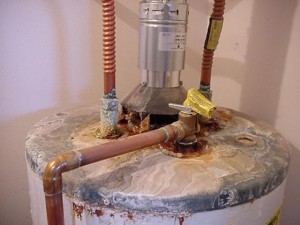Professional Water Removal La Mesa CA - Your Option
Wiki Article
Invigorating Your Area: The Ultimate Guide to Water Damage Repair
Are you dealing with water damage in your area? From recognizing the indicators of water damage to repairing and stopping future damages, we'll stroll you with each action.Identifying the Signs of Water Damage
If you see tarnished wall surfaces or notice a moldy odor, it's most likely an indication of water damages. Water damages can happen in numerous kinds, and it is very important to be able to identify the signs at an early stage to stop more deterioration. One common indication of water damage is the presence of spots or patches on your walls. These patches may appear darker or yellow-colored and can be created by water seeping via the wall surfaces. In addition, if you see paint peeling or bubbling, it can be an indicator of water damages beneath the surface area. One more dead giveaway is a mildewy or moist scent in your home. This smell is typically triggered by mold or mildew growth, which prosper in damp atmospheres. If you detect this odor, it's important to examine the resource and resolve any water damages immediately. Other signs to look out for include warped or drooping floors, swollen or stained baseboards, and the visibility of mold or mildew on surface areas. By being cautious and identifying these indications, you can take the necessary steps to resolve water damage and recover your area to its previous splendor.Examining the Extent of the Damage
Analyzing the degree of damages can aid establish the needed steps for reconstruction. When water damage takes place, it is important to thoroughly evaluate the situation to comprehend the range of the damages. Begin by evaluating the affected locations, such as wall surfaces, ceilings, floorings, and furniture. Search for visible indications of water damages, such as staining, bending, or mold and mildew development. Use your hands to really feel for any dampness or gentleness in the materials. It is also important to check for surprise damage, such as behind walls or under flooring. This can be done making use of dampness meters or infrared video cameras to discover any type of wetness that might not be visible to the nude eye.As soon as you have evaluated the degree of the damage, you can determine the essential actions for remediation. If the damage is minimal and constrained to a little area, you might be able to take care of the reconstruction procedure yourself. Nonetheless, if the damage is substantial or includes architectural aspects, it is advised to look for expert help. Remediation specialists have the know-how and tools to efficiently mitigate the damages and recover your room to its pre-damaged condition.
Getting Rid Of Standing Water and Drying Out the Area

When you have removed as much water as possible, it's time to concentrate on drying out the room. Usage followers and dehumidifiers to speed up the drying out process.
Display the humidity degrees and wetness web content regularly. Buy a wetness meter to accurately assess the progression. Drying out a room may take numerous days or even weeks, depending on the extent of the water damages.
Fixing and Bring Back Broken Structures and Products
You can start repairing and bring back broken frameworks and materials by evaluating the level of the damages. As soon as you have a clear understanding of the damages, you can start the remediation procedure.Begin by getting rid of any wet or damaged materials. This may include tearing out damp drywall, getting rid of water logged carpet, or disposing of ruined furniture. Be sure to wear protective equipment, such as handwear covers and a mask, to stay clear of call with any kind of possibly damaging substances.
Following, extensively dry the room to avoid further damage and the growth of mold. Use fans, dehumidifiers, and open windows to promote airflow and accelerate the drying process. It is essential to deal with any lingering dampness to protect against future troubles.
After the area is totally dry, you can start repairing and replacing damaged products. This may involve patching openings in the wall surfaces, refinishing wood floors, or painting surface areas. If essential, seek advice from professionals to ensure proper fixings and reconstruction.
Preventing Future Water Damages and Preserving a Healthy Room
Once the space is entirely dry, it is necessary to take steps to avoid future water damages and keep a healthy environment. Beginning by dealing with any kind of underlying problems that may have caused the water damages in the first area. Look for leaking pipes, faulty plumbing, or bad drain systems. Dealing with these issues you could check here will certainly help avoid future water damages and guarantee the long life of your room.Following, consider setting up a sump pump or a back-up generator to protect your area during heavy rainstorms or power interruptions. These measures will assist stop water accumulation and possible damage to your residential or commercial property. In addition, make certain to frequently inspect and preserve your rain gutters and downspouts. Eliminate any kind of particles that might block the flow of water and trigger it to overflow.

Verdict
By determining the signs of water damage, analyzing the degree of the damage, eliminating standing water, and fixing and go right here restoring broken frameworks, you can invigorate your space. Go ahead, take on that water damages and create a lovely and safe area as soon as again.
Report this wiki page